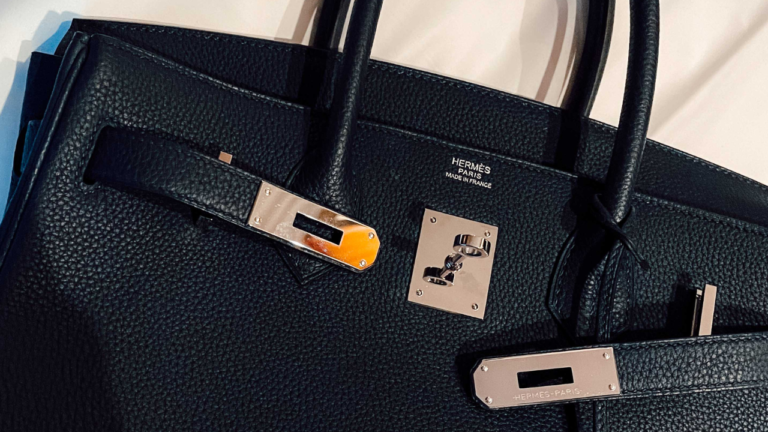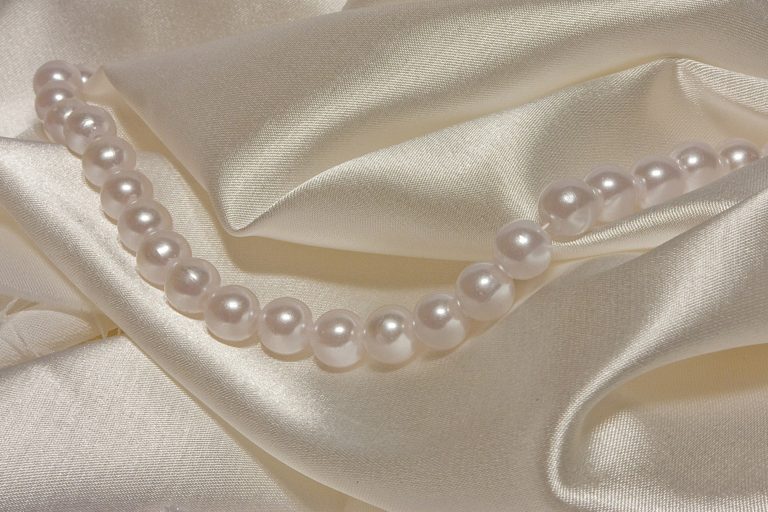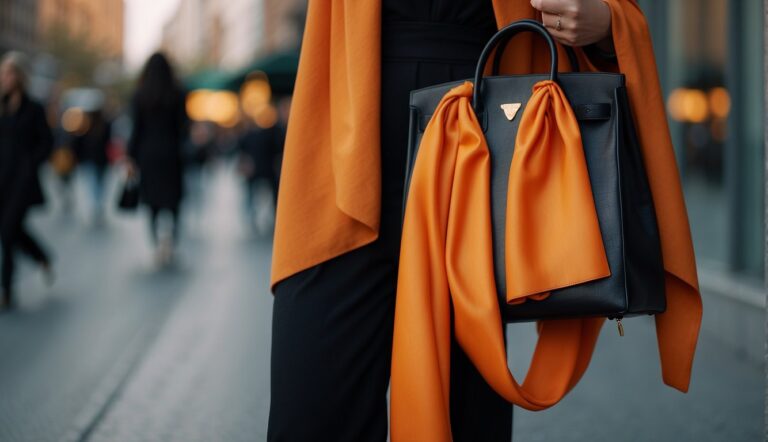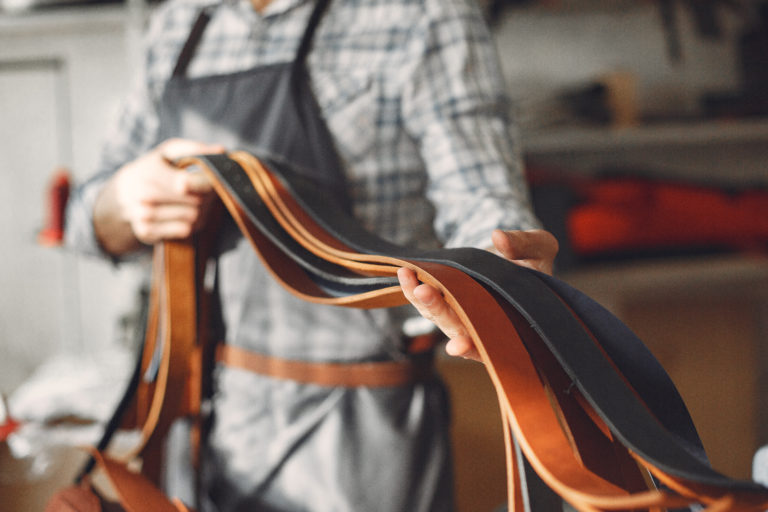Why Is The Himalayan Birkin Bag So Expensive?
The Himalayan Birkin is exceptionally expensive due to its rare Niloticus crocodile leather, meticulous dyeing process to resemble the Himalayan mountains, and diamond-encrusted hardware.
In this blog, we’ll delve into the various facets that contribute to the Himalayan Birkin’s extraordinary allure and its staggering price tag. From its rich history and unparalleled craftsmanship to its status as a symbol of luxury and a valuable investment, we aim to uncover what makes this bag so much more than just an accessory. Whether you’re a seasoned collector, a fashion aficionado, or simply curious about the world of luxury goods, this journey into the heart of high fashion promises to be enlightening and engaging.
Key takeaways
- The Himalayan Birkin Bag is a symbol of luxury and exclusivity, renowned for its rare materials, meticulous craftsmanship, and status in the fashion world.
- It’s not just a fashion statement but a valuable investment, with its price reflecting its rarity, craftsmanship, and the prestige associated with the Hermès brand.
- Ethical considerations and sustainability in fashion are influencing the perception and value of luxury items like the Himalayan Birkin.
History and Prestige
Embed from Getty ImagesOrigin of the Birkin Bag
The Birkin Bag, a brainchild of luxury fashion house Hermès, owes its inception to a chance encounter between actress Jane Birkin and Hermès CEO Jean-Louis Dumas in 1981. The story goes that Birkin, dissatisfied with her existing handbag options, sketched her ideal bag on an airplane sickness bag. Dumas, captivated by the concept, brought her vision to life, thus birthing a symbol of luxury and exclusivity in the fashion world.
Evolution into the Himalayan Birkin
From its humble beginnings, the Birkin bag evolved into various forms, with the Himalayan Birkin emerging as the epitome of luxury. Named after the elusive and serene Himalayan mountains, this variant is known for its exquisite craftsmanship and rarity. The Himalayan Birkin isn’t just a bag; it’s a testament to Hermès’ dedication to excellence and its standing in the luxury fashion market.
Symbolism in High Fashion and Luxury Market
The Himalayan Birkin is more than a mere accessory; it’s a symbol of wealth, status, and impeccable taste in the high fashion and luxury market. It represents a pinnacle of craftsmanship and exclusivity, making it a sought-after item among celebrities, royals, and collectors. Its reputation is a blend of the brand’s history, the bag’s rarity, and the societal prestige associated with owning such a piece.
Craftsmanship and Materials
Embed from Getty ImagesA. Description of the Materials Used
The Himalayan Birkin is renowned for its use of Nilo crocodile skin, one of the most luxurious and rare materials in fashion. The skin is carefully selected for its quality and texture, ensuring each bag is a masterpiece. The delicate coloration, resembling the majestic Himalayan mountains, is achieved through a meticulous dyeing process that is both an art and a science.
B. Detailed Explanation of the Craftsmanship Involved
Creating a Himalayan Birkin is a labor of love, involving up to 48 hours of handiwork by skilled artisans. Each stitch is sewn by hand, ensuring durability and perfection. The hardware, often plated with gold or palladium, is handcrafted and intricately designed, adding to the bag’s elegance and value.
C. Rarity of the Materials and Skilled Artisans
The scarcity of high-quality Nilo crocodile skin and the limited number of skilled artisans capable of creating such a masterpiece contribute significantly to the bag’s high cost. Hermès maintains a strict standard of craftsmanship, with each artisan undergoing years of training, making the production of the Himalayan Birkin a rare event in the world of luxury fashion.
Exclusivity and Demand

Production Numbers and Limited Availability
Hermès produces the Himalayan Birkin in extremely limited quantities, adding to its exclusivity. The brand doesn’t disclose production numbers, but it is widely known that owning a Himalayan Birkin is akin to acquiring a rare piece of art.
High Demand Among Celebrities and Collectors
The bag has garnered a cult following among the elite, including celebrities, fashion icons, and collectors. Its presence on red carpets, auctions, and high-profile events cements its status as a coveted accessory. The high demand, coupled with its scarce availability, fuels a competitive market where the Himalayan Birkin is often sold at prices well above its retail value.
Impact of Exclusivity on Pricing
The Himalayan Birkin’s pricing isn’t just about the cost of materials and craftsmanship; it’s also influenced by its rarity and the status it bestows upon its owners. This exclusivity creates a high demand in both primary and secondary markets, making it not just a purchase, but a significant investment. The pricing reflects not only the tangible aspects of the bag but also the intangible prestige associated with owning a piece of fashion history.
The Himalayan Birkin, with its limited availability and high demand, becomes more than just an accessory; it is a symbol of luxury and exclusivity. This exclusivity significantly impacts its price, making it one of the most sought-after and expensive bags in the world. The high cost is a testament to its status in the fashion industry and among the elite, transcending the boundaries of a typical luxury good.
Unique Features
Specific Design Elements of the Himalayan Birkin
The Himalayan Birkin is distinguished by its unique design elements that set it apart from other luxury handbags. Its color palette, inspired by the snow-capped Himalayan mountains, ranges from smoky grey to pearly white. This gradient effect is achieved through a meticulous dyeing process that requires exceptional skill and precision, making each bag a unique piece of art.
Color and Texture Unique to This Model
The Nilo crocodile skin, the primary material of the Himalayan Birkin, has a texture that is both visually stunning and tactilely pleasing. The skin’s natural pattern is enhanced through the dyeing process, creating a three-dimensional effect that is both elegant and striking. The combination of the bag’s color and texture makes it not just a fashion statement but a showcase of high craftsmanship.
Comparison with Other Birkin Bags
While all Birkin bags are symbols of luxury, the Himalayan Birkin stands out for its rarity and craftsmanship. Compared to other Birkin variants, which might use different leathers or colors, the Himalayan model is in a league of its own. The effort and skill required to produce the gradient effect on its exotic skin are unparalleled, explaining its position at the apex of the Birkin collection.
Investment Value
Historical Price Appreciation
The Himalayan Birkin is not only a fashion icon but also a valuable investment. Historically, the value of these bags has appreciated over time, often selling at auction for prices significantly higher than their original retail cost. This appreciation is driven by the bag’s rarity, demand, and status as a collectible item.
Comparison with Other Luxury Goods as Investments
When compared to other luxury investments like art, wine, or classic cars, the Himalayan Birkin holds its own. Its ability to retain and increase in value over time is akin to investing in high-end art. The key difference lies in its functionality – while it is a collectible item, it is also a usable, wearable piece, adding to its appeal.
Factors Influencing the Investment Potential
Several factors contribute to the Himalayan Birkin’s investment potential. The limited production, the reputation of the Hermès brand, and the global demand for exclusive luxury items are primary drivers. Additionally, as the conversation around sustainable and ethical fashion grows, the rarity of ethically sourced exotic materials is likely to increase, potentially boosting the bag’s value further.
Controversies and Ethical Considerations
Ethical Concerns Related to Exotic Materials
The use of exotic skins in fashion, including the Nilo crocodile skin of the Himalayan Birkin, has raised ethical concerns. Issues surrounding animal welfare and sustainable sourcing are at the forefront of these discussions. Critics argue that the fashion industry’s demand for exotic skins contributes to ecological imbalances and animal cruelty.
Brand’s Response to Sustainability and Ethical Issues
In response to these concerns, Hermès has taken steps to ensure ethical sourcing and sustainability in their production processes. The brand has implemented strict standards for the treatment of animals and the sourcing of materials. They have also invested in sustainable practices, aiming to reduce the environmental impact of their production.
Consumer Perspectives on Ethical Luxury
The debate over ethical luxury has influenced consumer behavior, with a growing segment of the market seeking transparency and sustainability in their luxury purchases. This shift has prompted brands like Hermès to balance their traditional craftsmanship with modern ethical practices. The Himalayan Birkin, as a result, stands at the intersection of luxury and responsibility, inviting both admiration for its craftsmanship and scrutiny for its materials.
Consumers are increasingly aware of the implications of their purchases, especially in the luxury market. This awareness has led to a nuanced understanding of what constitutes true luxury, with ethical considerations becoming as important as aesthetic and material value. The Himalayan Birkin, in this context, represents not just a status symbol, but also a reflection of the evolving values in the world of high fashion.
Conclusion
the Himalayan Birkin Bag stands as a pinnacle of luxury fashion, a testament to Hermès’ commitment to craftsmanship, and a symbol of exclusivity and prestige. Through this exploration, we have uncovered the layers that contribute to its high cost – the rich history, meticulous craftsmanship, rare materials, and the brand’s response to ethical considerations.
The Himalayan Birkin is not just a handbag; it’s an art piece, an investment, and a reflection of the evolving landscape of luxury fashion. As we conclude this journey, we hope you’ve gained a deeper understanding and appreciation of what goes into creating and sustaining the allure of one of the most exclusive and sought-after items in the world of luxury fashion. The Himalayan Birkin is more than just a bag; it’s a symbol of the fine line between opulence and art, tradition and innovation, exclusivity and responsibility.
FAQs
Why is the Himalayan Birkin Bag so expensive?
The Himalayan Birkin’s high price is due to its rare materials, especially Nilo crocodile skin, extensive handcrafted effort, limited production, and its status as a symbol of luxury and exclusivity.
Can the Himalayan Birkin Bag be considered a good investment?
Yes, the Himalayan Birkin Bag has historically appreciated in value, making it not just a luxury fashion item but also a significant investment akin to high-end art.
How does Hermès address ethical concerns related to the use of exotic skins?
Hermès focuses on ethical sourcing and sustainability, implementing strict standards for animal treatment and material sourcing, and investing in practices that reduce environmental impact.





